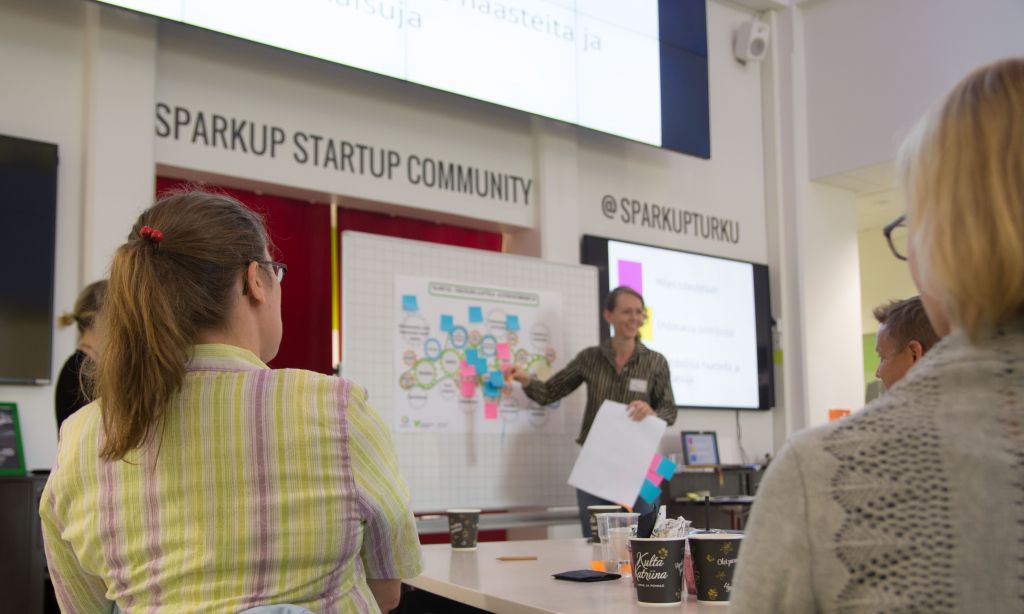Easy but so difficult CSR communications


Have you ever visited the website of a company to see how and what businesses communicate about their corporate social responsibility? How does your company communicate its own responsibility? Have you seen businesses promote lists of their values, roundabout goals, descriptions of tools, various standards or certificates on their websites? What types of mental images and feelings do they stir in you? Are you impressed? As part of the Telaketju project, we teamed up with businesses to develop these factors as well in textile recycling.
What are CSR communications? What is the best way to communicate responsibility?
According to the directors of Telaketju’s Responsibility and Transparency workshops, responsibility should be a fixed part of any company’s brand. A company should have one brand, one strategy and one story, all of which should support one another. Responsibility is not detached from the company’s other operations.
When a company starts to build its corporate social responsibility communications, it should first define a clear vision as its objective. Planning and implementing communications will be easier when everyone clearly understands and remembers the vision and all operations aim towards the same vision. Sometimes, the vision may seem like too far off, and there may be turbulence along the way. In those times, remember that each step will take you closer to achieving the goal if the goal is clear in your mind.
In the final workshop, we learned about the Fashion Transparency Index which ranks the world’s 100 largest textile fashion businesses according to the transparency of their operations. We were surprised to find some fast fashion companies with an ill reputation at the top of the list. However, it is important to remember that transparency is not the same as responsibility. Transparency is only a tool that enables structural and systematic changes in the textiles industry. It is one of the first steps towards more responsible operations but does not indicate the actual impacts of the company’s actions.
Do we know how?
Companies seem to face two dilemmas in their CSR communications. First of all, such communications are seen as a separate piece that has nothing to do with the rest of the company’s puzzle. If the vision is cloudy, the responsibility statements will easily start to feel artificial. This can be corrected by supporting the responsibility with the company’s own story of why it does what it does. With storification, transparency and responsibility can be created into a powerful brand story for the customer, making the customer’s heart skip a beat.
Another issue is that nothing is revealed until the company is fully ready. This may stem from the traditional Finnish mindset of humility and modesty or the lack of courage to start communicating about responsibility that is not yet foolproof and all-encompassing. The problem can be thwarted by understanding that responsibility is never complete but an ongoing, iterative process with different companies in different parts of the cycle. In the final workshop, it was wonderful to see how the companies realised that they are already working hard for responsibility but have not yet systematically communicated any of that externally.
An open and transparent business grows and succeeds
As part of the Telaketju workshops, we also visited Kotipizza. The company has produced successful CSR communications and shown by example how everything does not immediately need to be complete and perfect. They have successfully integrated responsibility at the core of their communications. The customers are satisfied and the sales are on the rise. It was extremely interesting to visit a company outside the textiles industry. We noticed that the building blocks of CSR communications are, in the end, very similar in both the textiles recycling industry and the food industry.
In the future, companies will have new types of tools to assist their responsibility work and the transparency of their production chains. Today’s market already offers some digital platforms and systems to help companies in their responsibility work, but actual breakthroughs are still around the corner. Provenance, a company developing a blockchain technology tool for the monitoring of the transparency of production chains offers a promising solution. The textiles industry with its extremely long and braided production chains in particular is sorely in need of new tools to monitor and measure responsibility.
Be brave. Do not be too afraid of discussion and criticism. Discussion means that people care about these things. By being open and transparent, the company can also show that it cares. This opens a new type of connection between the company and its stakeholders. At the same time, sales can be increased and customers kept satisfied by producing new types of added value for them.
Sonja Lankiniemi, Piia Nurmi and Sara Malve-Ahlroth
Turku University of Applied Sciences
The authors work for the Telaketju project.
